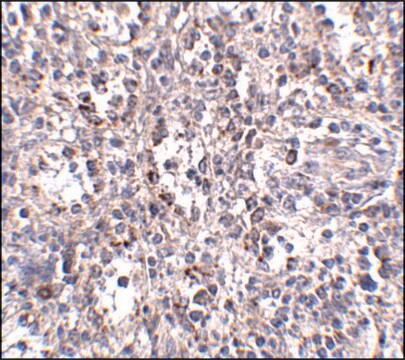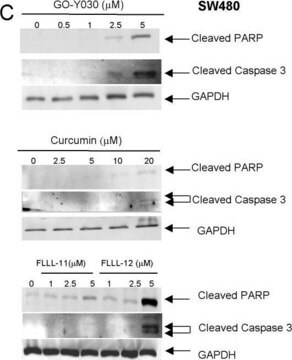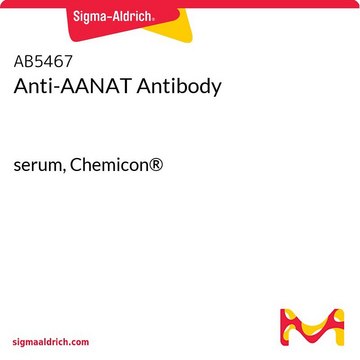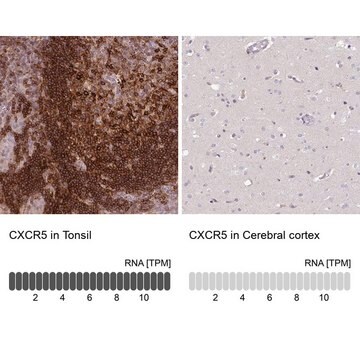MABC730
Anti-SCARB1 Antibody, clone 5B8.2
clone 5B8.2, 1 mg/mL, from mouse
Sinónimos:
Scavenger receptor class B member 1, SRB1, CD36 and LIMPII analogous 1, CLA-1, CD36 antigen-like 1, Collagen type I receptor, thrombospondin receptor-like 1, SR-BI, CD36
About This Item
WB
western blot: suitable
Productos recomendados
origen biológico
mouse
Nivel de calidad
forma del anticuerpo
purified immunoglobulin
tipo de anticuerpo
primary antibodies
clon
5B8.2, monoclonal
reactividad de especies
human
concentración
1 mg/mL
técnicas
immunohistochemistry: suitable
western blot: suitable
isotipo
IgMκ
Nº de acceso NCBI
Nº de acceso UniProt
Condiciones de envío
wet ice
modificación del objetivo postraduccional
unmodified
Información sobre el gen
human ... SCARB1(949)
Descripción general
Inmunógeno
Aplicación
Apoptosis & Cancer
Apoptosis - Additional
Calidad
Western Blotting Analysis: 1.0 µg/mL of this antibody detected SCARB1 in 10 µg of human adrenal tissue lysate.
Descripción de destino
Forma física
Almacenamiento y estabilidad
Cláusula de descargo de responsabilidad
¿No encuentra el producto adecuado?
Pruebe nuestro Herramienta de selección de productos.
Opcional
Código de clase de almacenamiento
12 - Non Combustible Liquids
Clase de riesgo para el agua (WGK)
WGK 2
Punto de inflamabilidad (°F)
Not applicable
Punto de inflamabilidad (°C)
Not applicable
Certificados de análisis (COA)
Busque Certificados de análisis (COA) introduciendo el número de lote del producto. Los números de lote se encuentran en la etiqueta del producto después de las palabras «Lot» o «Batch»
¿Ya tiene este producto?
Encuentre la documentación para los productos que ha comprado recientemente en la Biblioteca de documentos.
Nuestro equipo de científicos tiene experiencia en todas las áreas de investigación: Ciencias de la vida, Ciencia de los materiales, Síntesis química, Cromatografía, Analítica y muchas otras.
Póngase en contacto con el Servicio técnico






